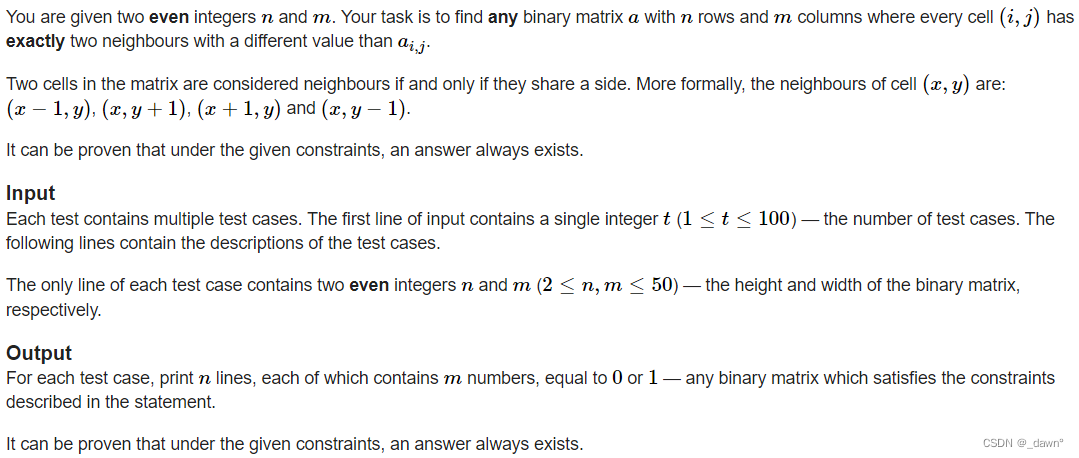当前位置:网站首页>Codeforces Round #804 (Div. 2)(A~D)
Codeforces Round #804 (Div. 2)(A~D)
2022-07-08 00:38:00 【_ dawn°】
A. The Third Three Number Problem

Give a number n, Find three numbers a,b,c, Make these three numbers exclusive or to each other to get the sum of the three numbers equal n.
Ideas : In fact, my idea is to see the first example to explain ,,
![]()
Then I thought that two numbers could be the same , In this way, the sum of three numbers can be transformed into the sum of two numbers , And for even numbers , Direct use n/2 and 0 Exclusive or ; For odd numbers , In the example 1 dissatisfaction , Then I guess that odd numbers cannot meet the condition , Facts have proved that this can be proved : Suppose the last bit of binary has k individual 1 and 3-k individual 0, that n The parity of the last bit of binary and k*(3-k) identical , that n The last bit of the binary should always be 0.
AC Code:
#include <bits/stdc++.h>
#define INF 0x3f3f3f3f
typedef long long ll;
const int mod=1e9+7;
const int N=55;
int t,n;
int main(){
std::ios::sync_with_stdio(false);
std::cin.tie(0);
std::cout.tie(0);
std::cin>>t;
while(t--){
std::cin>>n;
if(n&1){
std::cout<<-1<<'\n';
continue;
}
std::cout<<n/2<<' '<<n/2<<' '<<0<<'\n';
}
return 0;
}B. Almost Ternary Matrix
Give two even numbers , Construct a 01 matrix , The number of squares around each square that is different from it is 2.
Ideas : Try drawing it yourself , We will find that we can find one 4*4 Element matrix of , According to this unit matrix, you can output circularly , The identity matrix is as follows :

Of course ,01 interchangeable , So the code is very simple .
AC Code:
#include <bits/stdc++.h>
#define INF 0x3f3f3f3f
typedef long long ll;
const int mod=1e9+7;
const int N=55;
int t,n,m;
int ans[4][4]={1,0,0,1,0,1,1,0,0,1,1,0,1,0,0,1};
int main(){
std::ios::sync_with_stdio(false);
std::cin.tie(0);
std::cout.tie(0);
std::cin>>t;
while(t--){
std::cin>>n>>m;
for(int i=0;i<n;i++){
for(int j=0;j<m;j++){
std::cout<<ans[i%4][j%4]<<" \n"[j==m-1];
}
}
}
return 0;
}os: At first, I thought about how to write code for a long time hhhhh
C. The Third Problem
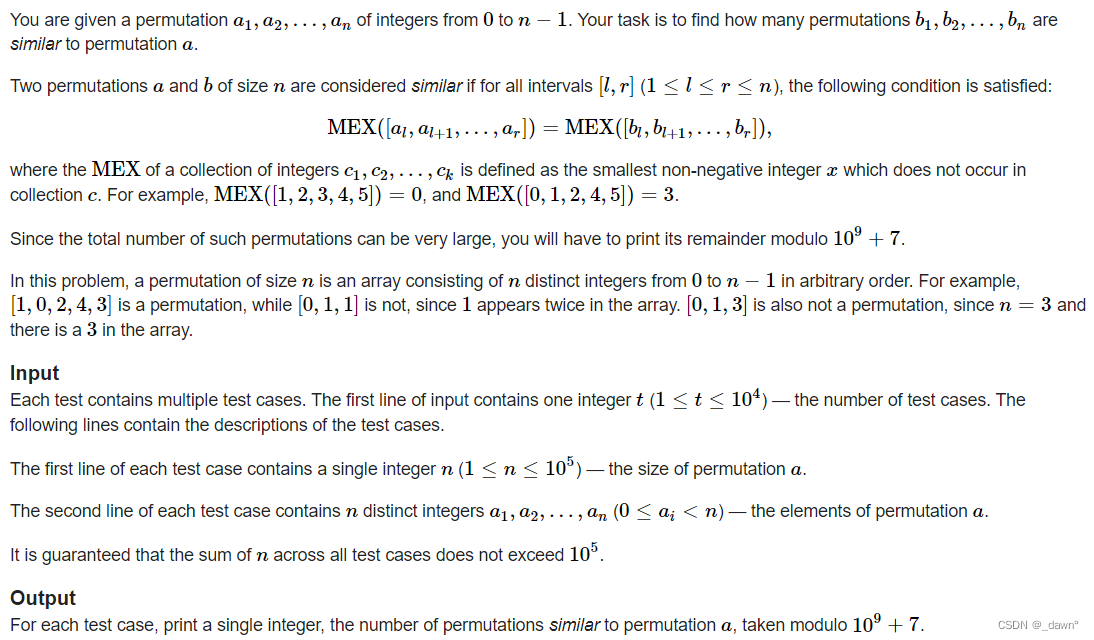
Give a permutation, But from 0~n-1, Ask how many ways to rearrange these numbers , Make the reordered array for each interval MEX The values are equal .
Ideas : See this question , It's probably a problem similar to permutation and combination . According to our observation, we can find that , For each number , As long as this number goes forward and backward, there are elements smaller than this number , Then this number can move within this range , Examples 4:
1 3 7 2 5 0 6 4
Than 2 The small ones are just 0 and 1, that 2 You can do it on the 2 Move to the fifth position ;3 It can only move within this range , Because than 3 The smallest number can only reach 0 and 1 The location of ; And for the number around the number smaller than yourself , Their position is immovable , such as 4, Smaller than it 0,1,2,3 It's all in front , It's easy to understand if its position changes , There must be an interval MEX The value has changed. . According to this property , We can sort by number , Enumerate from small to large , Constantly update the maximum range of numbers smaller than the current number , There are several ways to choose the position for calculating each number , Multiply by . Of course ,0 and 1 As the initial interval range ,0 and 1 The position of must not move .
AC Code:
#include <bits/stdc++.h>
#define INF 0x3f3f3f3f
typedef long long ll;
const int mod=1e9+7;
const int N=1e5+5;
int t,n;
int a[N];
struct node{
int id,num;
bool operator<(const node &a) const{
return num<a.num;
}
} e[N];
int main(){
std::ios::sync_with_stdio(false);
std::cin.tie(0);
std::cout.tie(0);
std::cin>>t;
while(t--){
std::cin>>n;
for(int i=1;i<=n;i++){
std::cin>>a[i];
e[i].id=i;
e[i].num=a[i];
}
std::sort(e+1,e+1+n);
int r=-1,l=1e9;
ll ans=1;
for(int i=1;i<=n;i++){
r=std::max(r,e[i].id);
l=std::min(l,e[i].id);
if(i>2&&e[i].id>l&&e[i].id<r){
ans*=(r-l-1-i+3);
ans%=mod;
}
}
std::cout<<ans<<'\n';
}
return 0;
}os: Finish the first two questions in more than 20 minutes , I kept thinking C, In the last five minutes hhhh
D. Almost Triple Deletions
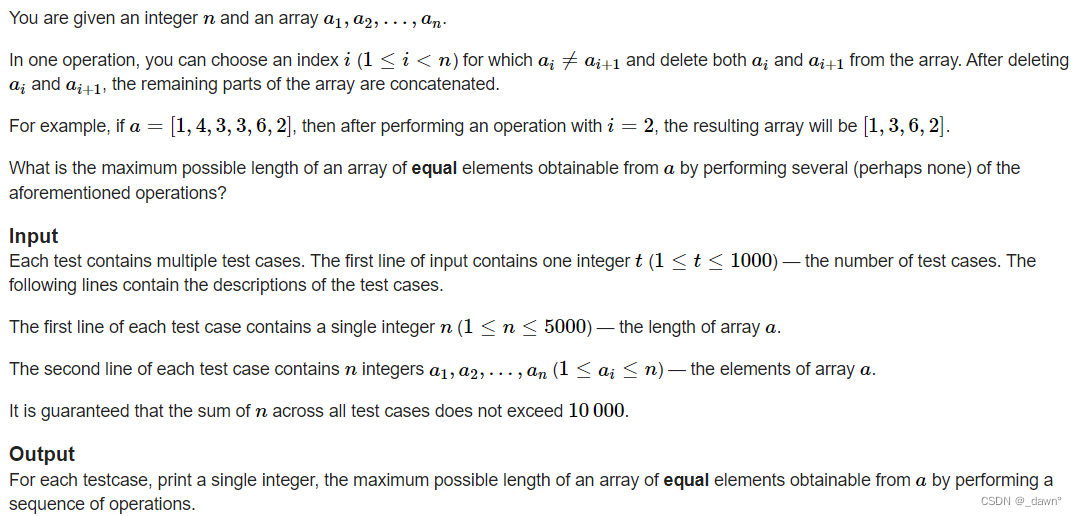
Give an array , If two adjacent numbers are different , Then you can delete these two numbers . After the final operation is completed, the remaining numbers in the array are equal , Ask how many numbers you can keep at most .
Ideas : Study Big guy's idea , That's too much
We can think that the final result of the operation is to delete some continuous intervals , And for an interval [l,r] Come on , If and only if the following conditions are met , You can delete : The interval length is even ; The maximum number of elements that appear most frequently in the interval is (r-l+1)/2.
The necessity must , Proof of sufficiency :
For the most frequent number , There must be a way , Delete one and another number , Then the number of occurrences remaining t<=(r-l+1)/2-1; If you delete , This number is still the most frequent , Then it still meets the initial conditions , You can still delete one number and another number ; If it doesn't appear the most after deletion , Then there must be another number that satisfies the initial condition of the largest number of occurrences , You can delete one of the numbers and another number , This is the mutual transformation between elements in this interval , At last, when the equilibrium is reached, the occurrence times of the two elements are equal , All equal to l/2, This must be deleted , Make the interval as long as 0, Certificate completion .
So we can first deal with sub intervals that can be deleted ,cel[l][r]=1, We define DP Array f[i] It means from the first to i Number , Delete some numbers until all numbers are equal to a[i] after , The maximum number of remaining ,f[i] To f[j] The transformation equation of can be expressed as deleting interval [j,i], bring f[i]=f[j]+1.
The final answer is not necessarily f[n], Because the last remaining numbers are not necessarily equal to a[n], So you need to scan it once to get the maximum value .
Data range n<=5000,O(n^2) Yes .
AC Code:
#include <bits/stdc++.h>
#define INF 0x3f3f3f3f
typedef long long ll;
const int mod=1e9+7;
const int N=5e3+5;
int t,n;
int a[N];
int main(){
std::ios::sync_with_stdio(false);
std::cin.tie(0);
std::cout.tie(0);
std::cin>>t;
while(t--){
std::cin>>n;
for(int i=1;i<=n;i++){
std::cin>>a[i];
}
int cel[n+1][n+1]={0};
for(int l=1;l<=n;l++){
int cnt[n+1]={0},max=0;
for(int r=l;r<=n;r++){
cnt[a[r]]++;
max=std::max(max,cnt[a[r]]);
if((r-l+1)%2==0&&max*2<=r-l+1)
cel[l][r]=1;
}
}
int f[n+1]={0};
int ans=0;
for(int i=1;i<n;i++){
if(cel[1][i])
f[i+1]=1;
}
f[1]=1;
for(int i=1;i<=n;i++){
for(int j=1;j<i;j++){
if((j+1>i-1||cel[j+1][i-1]==1)&&a[j]==a[i]&&f[j]>0)
f[i]=std::max(f[i],f[j]+1);
}
if(i==n||cel[i+1][n]) ans=std::max(ans,f[i]);
}
std::cout<<ans<<'\n';
}
return 0;
}
os: blame , This question card memset
Hey, hey, hey , Qingla qingla !
 If there is any mistake, please advise , thank you !
If there is any mistake, please advise , thank you !
边栏推荐
- 快速上手使用本地测试工具postman
- After going to ByteDance, I learned that there are so many test engineers with an annual salary of 40W?
- 应用实践 | 数仓体系效率全面提升!同程数科基于 Apache Doris 的数据仓库建设
- C language 001: download, install, create the first C project and execute the first C language program of CodeBlocks
- 51与蓝牙模块通讯,51驱动蓝牙APP点灯
- 韦东山第二期课程内容概要
- 什么是负载均衡?DNS如何实现负载均衡?
- 如果在构造函数中抛出异常,最好的做法是防止内存泄漏?
- Experience of autumn recruitment in 22 years
- 测试流程不完善,又遇到不积极的开发怎么办?
猜你喜欢
![Cause analysis and solution of too laggy page of [test interview questions]](/img/8d/3ca92ce5f9cdc85d52dbcd826e477d.jpg)
Cause analysis and solution of too laggy page of [test interview questions]

new和delete的底层原理以及模板

NVIDIA Jetson测试安装yolox过程记录

某马旅游网站开发(登录注册退出功能的实现)
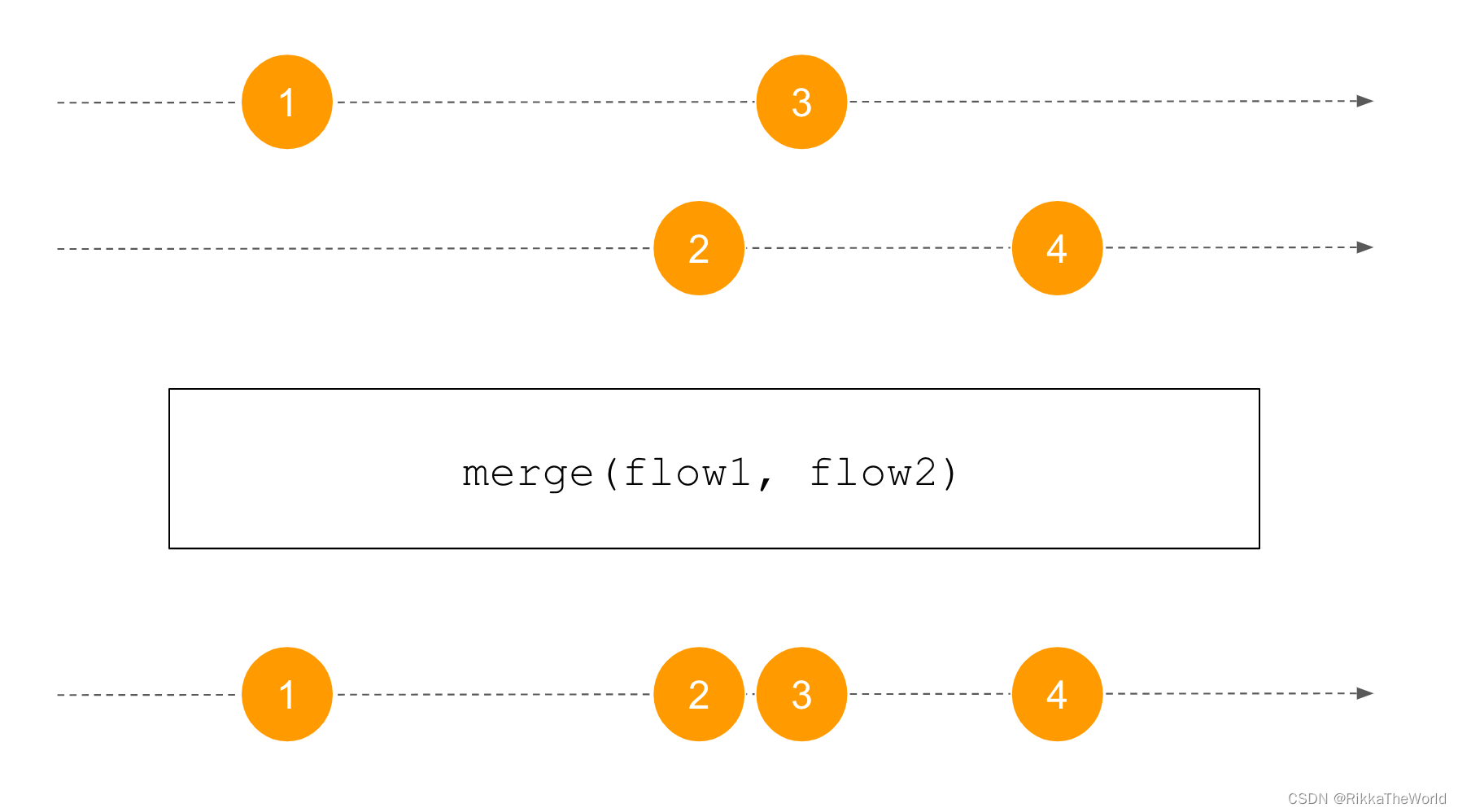
深潜Kotlin协程(二十二):Flow的处理
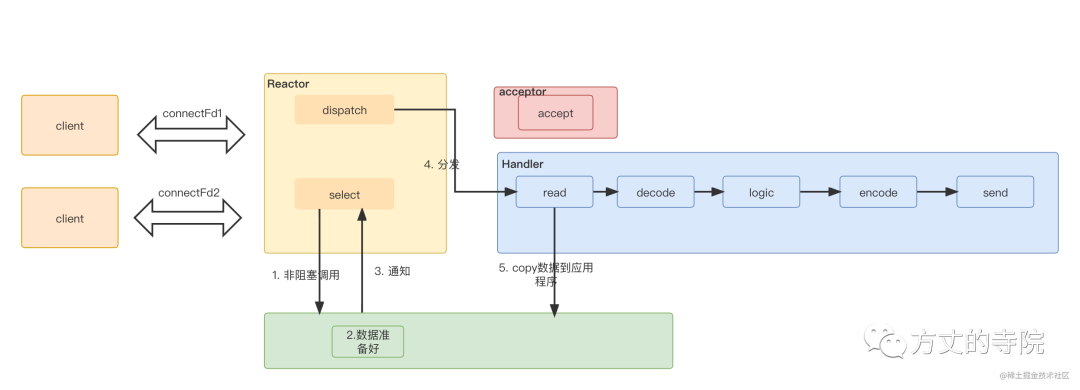
单机高并发模型设计
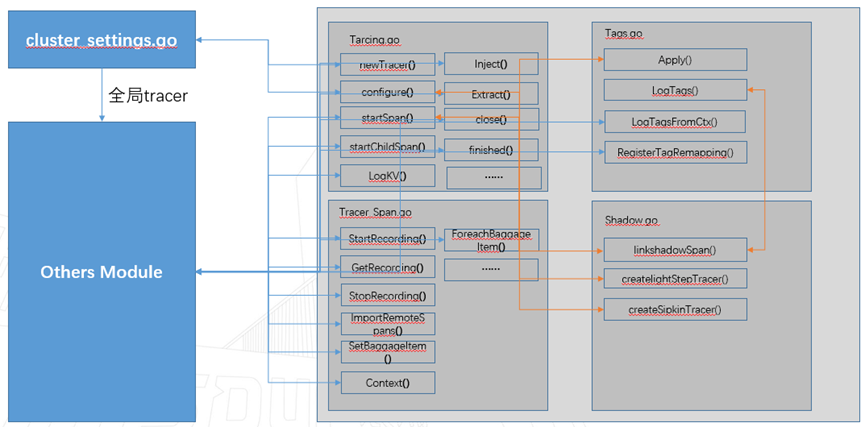
Langchao Yunxi distributed database tracing (II) -- source code analysis
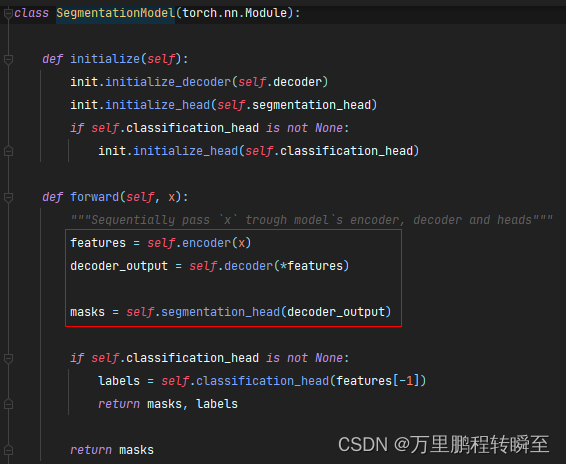
语义分割模型库segmentation_models_pytorch的详细使用介绍
![[研发人员必备]paddle 如何制作自己的数据集,并显示。](/img/50/3d826186b563069fd8d433e8feefc4.png)
[研发人员必备]paddle 如何制作自己的数据集,并显示。
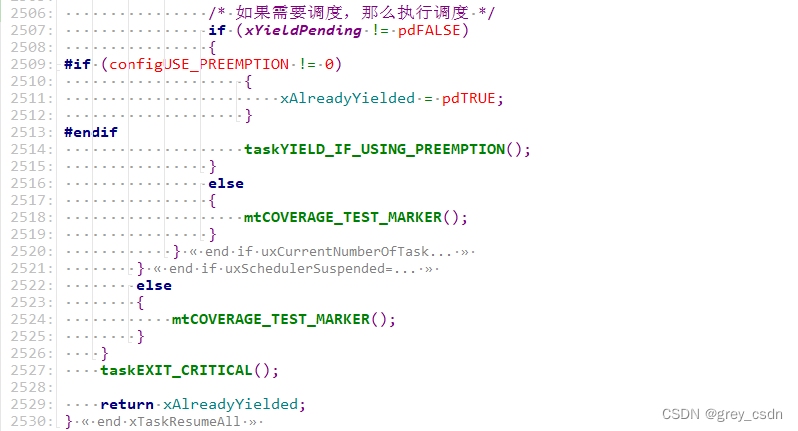
1293_ Implementation analysis of xtask resumeall() interface in FreeRTOS
随机推荐
Cascade-LSTM: A Tree-Structured Neural Classifier for Detecting Misinformation Cascades(KDD20)
They gathered at the 2022 ecug con just for "China's technological power"
某马旅游网站开发(对servlet的优化)
深潜Kotlin协程(二十二):Flow的处理
tourist的NTT模板
Leetcode brush questions
接口测试要测试什么?
Interface test advanced interface script use - apipost (pre / post execution script)
Where is the big data open source project, one-stop fully automated full life cycle operation and maintenance steward Chengying (background)?
搭建ADG过程中复制报错 RMAN-03009 ORA-03113
ReentrantLock 公平锁源码 第0篇
手写一个模拟的ReentrantLock
[programming questions] [scratch Level 2] March 2019 garbage classification
Operating system principle --- summary of interview knowledge points
Reading notes 004: Wang Yangming's quotations
Introduction to paddle - using lenet to realize image classification method I in MNIST
STM32F1與STM32CubeIDE編程實例-旋轉編碼器驅動
Is 35 really a career crisis? No, my skills are accumulating, and the more I eat, the better
How to insert highlighted code blocks in WPS and word
Langchao Yunxi distributed database tracing (II) -- source code analysis
